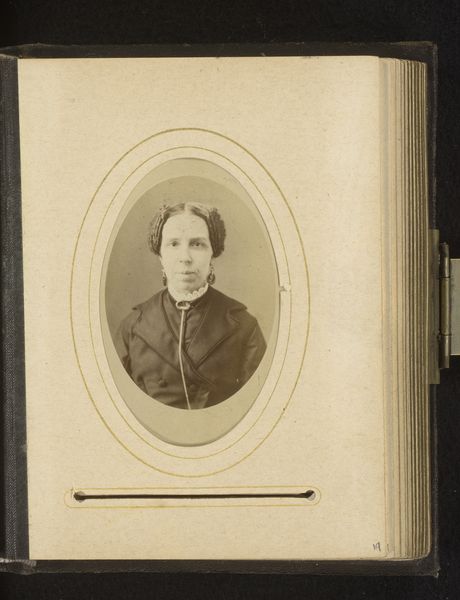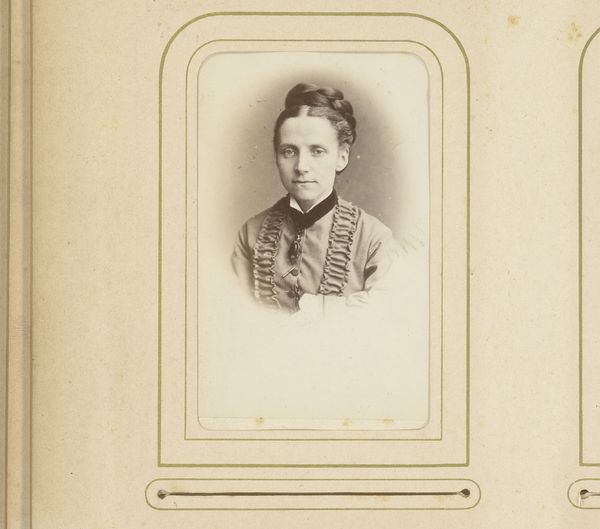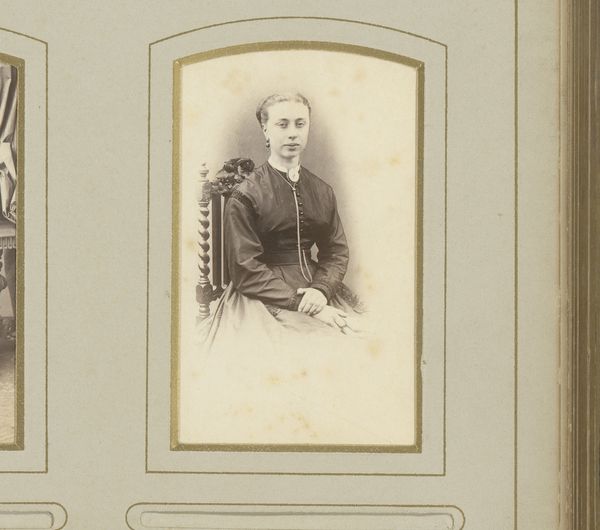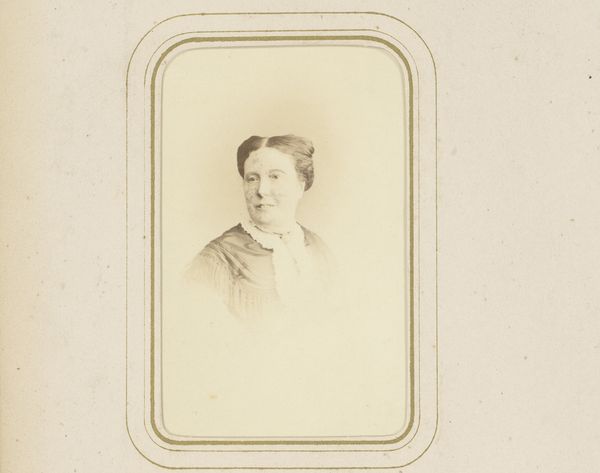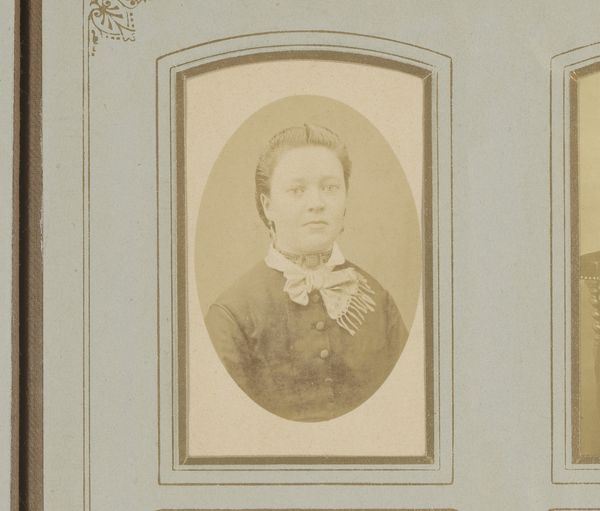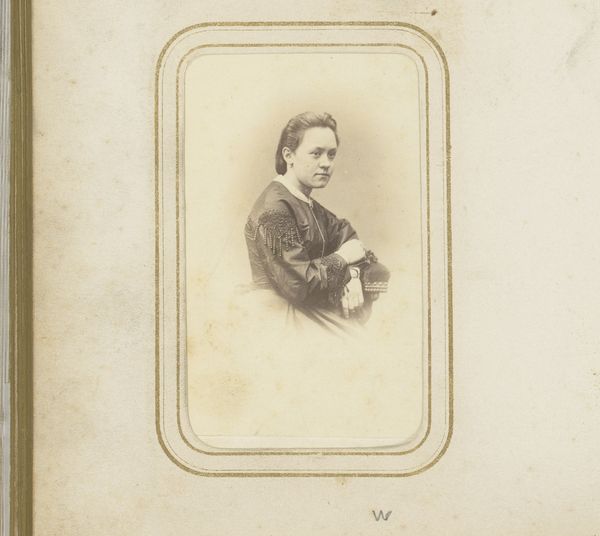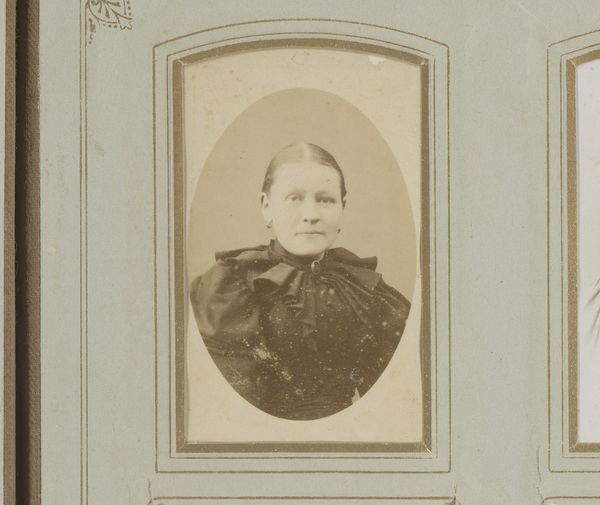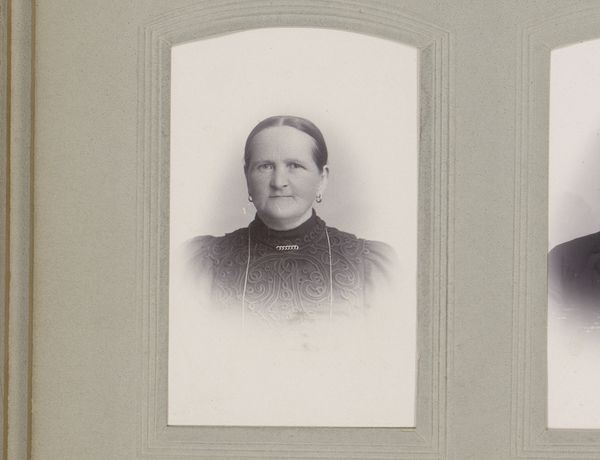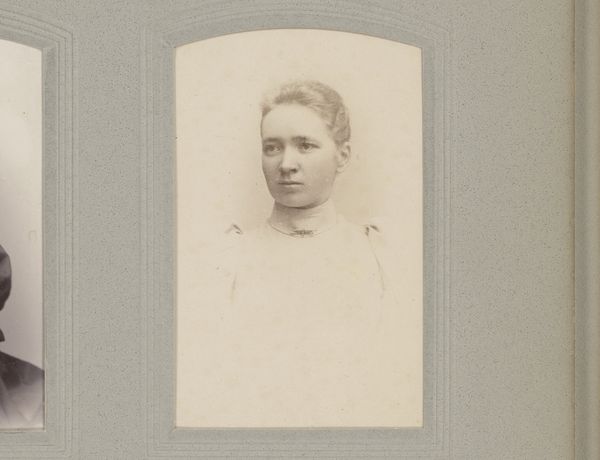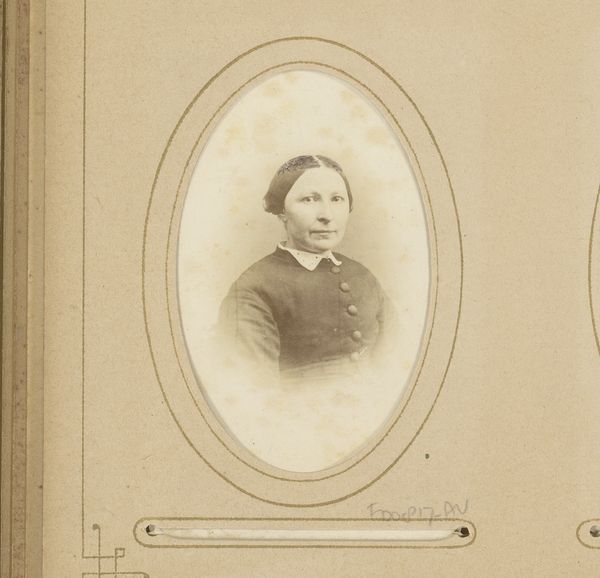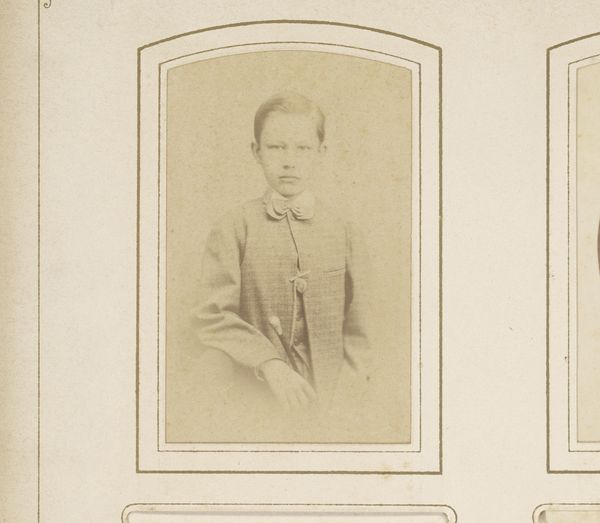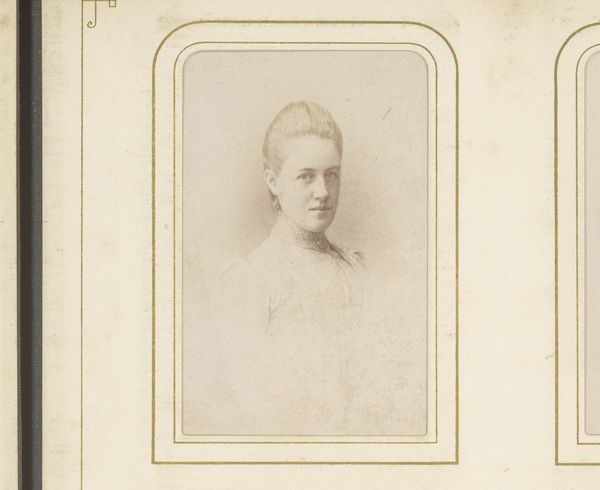
daguerreotype, photography
#
portrait
#
daguerreotype
#
photography
Dimensions: height 83 mm, width 50 mm
Copyright: Rijks Museum: Open Domain
Curator: This photographic portrait, believed to be made between 1866 and 1890 by Brandebourg & Rissé, presents us with a glimpse into the life of an anonymous woman. It appears to be a daguerreotype. What's your immediate response to her image? Editor: My first impression is one of quiet resilience. Her gaze is direct, yet there’s a vulnerability in the set of her jaw. The tones are subdued, almost ghostly, creating a somber atmosphere. Curator: Indeed, photography in this era held significant cultural weight. This portrait, like many others, would have been carefully constructed to convey specific messages about the subject's social standing, character, and values, perpetuating certain ideals, especially relating to gender and class. Editor: And the inherent limitations of early photography—the long exposure times, the specific lighting—likely played a role in shaping that constructed image, reinforcing established gender roles. How much agency did she really have in crafting her representation? We must consider her access to resources and societal constraints. Did the photographers have any particular politics in representing this woman, for example? Curator: The absence of flamboyance or overt markers of status makes me wonder whether we're looking at someone outside the traditional elite. The simple dress and somewhat severe hairstyle point to an aesthetic less concerned with conspicuous consumption. Could her very existence captured in photographic form be an act of subversion, or, at least, participation? Editor: That’s an interesting proposition, to consider a woman who's not from a socially empowered milieu who may be attempting to exercise whatever power she can within societal structure and norms, as fragile and restrictive as they are. Also the physical framing and material matter. It's clearly a display image of importance as part of its framing. What messages might be gleaned in its display within a home for family, friends, visitors to view? Curator: Well, regardless of its context and reception at the time, what the piece brings forth today is her very individuality. That to me is powerful in light of this individual potentially confronting the rigid structures she has in fact, and for me her spirit seems very present today. Editor: I agree, absolutely. Looking beyond its historical trappings allows us to imagine the person, rather than just the product of a particular time and photographic tradition. And maybe find the strength in silence and resilience she expresses through her image.
Comments
No comments
Be the first to comment and join the conversation on the ultimate creative platform.

